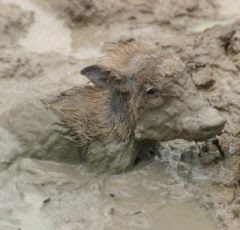Ancient Black Sea connections
In ancient times, when the western world's trade was done by sailing ships and its Empires rose and fell through the control of trade goods and gold. The Black Sea and its tributaries connected Europe to the rest of the rest of the known world. Ancient European seafarer trader routes around the Black Sea were sailed by Hittites, Carians, Thracians, Greeks, Persians, Cimmerians, Scythians, Romans, Byzantines, Goths, Huns, Avars, Bulgars, Slavs, Varangians, Crusaders, Venetians, Genoese, Lithuanians, Georgians, Poles, Tatars, Ottomans, and Russians.
Overland routes extended that range all the way to China via the Mongols, to India via the Persians and Arabs and almost all of Africa via the Nile and the Mediterranean Basin. Taurica, the name of Crimea in antiquity, had then and still has the best natural harbors on the Black Sea, as the Russian Navy well knows. Odessa, on the opposite side of the Dnieper River, also played a huge role.
Odessa was once occupied by an ancient Greek colony in pre-history. Archaeological artifacts confirm links between the Odessa area and the eastern Mediterranean. Other archaeological finds point much further back to The Dnieper River Valley as being the dividing line between the Neanderthal and Cro-Magnons [us] for thousands of years between 42,000BC and 25,000BC when inexplicably the Neanderthals seemed to disappear [though some theories say they just all inter-bred].
Throughout the centuries, Crimea was invaded or occupied successively by the Goths (AD 250), the Huns (376), the Bulgars (4th–8th century), the Khazars (8th century), the state of Kievan Rus' (10th–11th centuries), the Byzantine Empire (1016), the Kipchaks (Kumans) (1050), and the Mongols (1237). In the 13th century, the Republic of Genoa seized the settlements which their rivals, the Venetians, had built along the Crimean coast and gained control of the Crimean economy and the Black Sea commerce for two centuries
In the Middle Ages successive rulers of the Crimea-Odessa region [just love this Crimean castle on the left] included various nomadic tribes (Petchenegs, Cumans), the Golden Horde [Mongols], the Crimean Khanate, the Grand Duchy of Lithuania, and the Ottoman Empire. The Ottomans ruled for 250 yrs with the aid of the Mongols some of whom didn't go back - we now call them Tartars - until they lost it to the Russians and Cossacks just before 1800.
In 1905 Odessa was the site of a workers' uprising supported by the crew of the Russian battleship Potemkin, the focus of Sergei Eisenstein's famous motion picture. Following the Bolshevik Revolution in 1917 during World War I, Odessa and Crimea were occupied by several groups, including the Ukrainian Tsentral'na Rada, the French Army, the Red Army and the White Army. In 1918, Odessa became the capital of the independent Odessa Soviet Republic.
Nowadays 61% of Odessa's residents are Ukrainian speakers, 29% Russian speakers the remainder self-identify as Albanians, Armenians, Azeris, Crimean Tatars, Bulgarians, Georgians, Greeks, Jews, Romanian sand Turks, among others. In Crimea today it's: Russians: 58.32%; Ukrainians: 24.32%; Crimean Tatars: 12.1%; Belarusians, 1.44%; Tatars: 0.54%; Armenians: 0.43%; Jews: 0.22%, Greeks: 0.15% and others.
My point here is that the borders of this region have moved around so often in recorded history that today's political borders are essentially meaningless other than perhaps as divisions for the tax collectors. Those folks being described as western Ukrainians are indistinguishable genetically from those we call Russians or from Poles, Bulgarians, Romanians, Belarusians etc. So, as the borders and genetic heritage seem equally meaningless about the only way all these people differ is language and as linguists know all of them are slight variations of a basic proto language. That leaves religion, i'm not going there as everybody is entitled to believe in whatever gets them through the night.
When the headlines shout, 'US tells Russia to keep troops out of Ukraine as Crimea flashpoint looms' who is that bellicose crap really aimed at? Certainly not Putin and his advisers, they know all this history and lots more. Do those in the US administration really believe this crap? Of course not, Obama and his advisers know all this history and more too. It's not aimed at the Russian people, most of them view Crimea as a Russian territory. Thi crap, this propaganda, this spin is aimed at us in the west who are, supposedly, the historically uninformed the receivers of it.
That, the importance of being informed is why The Mud Report is doing all these background articles on this issue. Only by being informed can we all calmly come to our own conclusions, just as, hopefully, the Ukrainians will. Tomorrow, it'll probably be more history, probably about the Mongols primarily, which i find fascinating. Then probably one last piece on how geography, driven by geology, almost always defines what our short-term focus sees as political and cultural divides.




